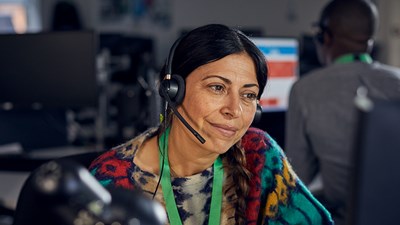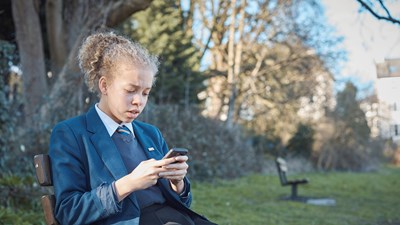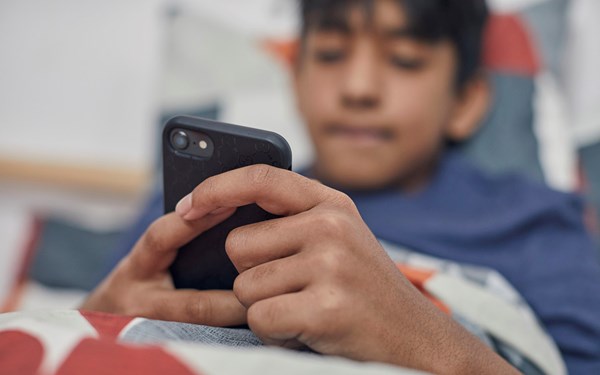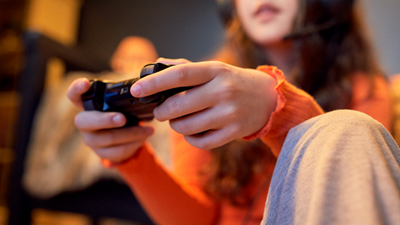What do we mean by sharing nudes and semi-nudes?
Sharing nudes is when someone sends a naked or semi-naked image or video to another person. Sharing nudes is sometimes called ‘sexting’, however this term is often used by young people to talk about sharing sexual messages and not imagery.
Young people can send nudes using phones, tablets and laptops and can share them across any app, site or game, including during a livestream. It could include sharing them across devices using offline services like Airdrop or Bluetooth.
If you’re worried your child might have been sending or receiving nude images, or if you want to talk to them about the risks, we’ve got advice to help.
Reasons why children and young people may send nude or semi-nude images or videos to someone include:
- Peer pressure.
- Being blackmailed, harassed or threatened
- Being groomed or coercion
- To increase their self-esteem
- To explore or prove their sexuality
- Feeling like they ‘owe’ their boyfriend or girlfriend and being made to feel guilty if they don’t
- Being in a relationship with someone and fully trusting them
- They’re in a long distance or online relationship and want to have sexual relationship
- As a dare or joke.
The law says that creating or sharing sexual images or videos of a child under 18 is illegal, even if the person sharing is a child. This includes:
- sending sexual messages to a child
- a child taking an explicit photo or video of themselves or a friend
- sharing an explicit image or video of a child, even if it's shared between children of the same age
- having, downloading or storing an explicit image or video of a child, even if the child gave their permission for it to be taken
- sharing an explicit image or video of a child is illegal, even if it's shared between children of the same age. ‘Sharenting’ - or adults sharing a photo of a child to raise awareness is also illegal.
Whilst it’s illegal for anyone to exchange nude or semi-nude imagery of a child, the legislation is there to protect children from abuse. If an incident involving a young person sharing a nude is reported to the police, it is very unlikely it will result in the child being prosecuted.
What are the risks of sharing nudes?
It's important to talk to your child about the risks of sharing nudes and let them know they can come to you, or an adult they trust, if someone's pressuring them to share an image or video of themselves.
Some of the risks of sending and sharing nudes for children and young people are:
They could lose control of the images, videos or messages and how they're shared. Once something is shared online it can be saved or copied by others. If the image has been shared widely, they might also experience anxiety over the image being re-shared in the future.
Young people can have their photos, messages or videos shared without their consent and be bullied about them. This can lead to difficult emotions like distress, embarrassment or shame.
Sometimes a child or young person might be sent a nude image or video of someone else and decide to share it with other people. There are many different reasons why a young person might decide to do this but some of them are:
- in retaliation after a bad break up or fall out
- to embarrass or bully someone
- as part of a dare or challenge
- thinking it’s funny or harmless
- they feel like everyone else is sharing it.
Young people might not always recognise this as inappropriate behaviour so it’s important to talk to them about consent and sharing images or videos of others online. Check out our advice on Healthy Relationships for tips on how to speak to them about this topic.
Online sexual harassment is a form of bullying and is when someone receives unwanted sexual contact on a digital platform. When someone has a nude image or video shared of them online it is classed as online sexual harassment.
Some of the behaviours could include:
- spreading rumours or lies of a sexual nature
- sharing a nude image or video of someone without their consent
- photoshopping or editing an image or video of someone in a sexualised way
- sharing a sexual image and claiming it to be of someone in order to embarrass or upset them
- sending sexualised messages to someone via private message or commenting publicly on their posts
- pressuring someone to share a nude image or video of themselves by repeatedly sending them messages
- calling people names using offensive or discriminatory sexual language
- being bullied because of their actual/perceived gender or sexual orientation
- sharing a link to a website that contains sexualised content
- or sending sexualised emojis or memes to embarrass or annoy someone.
If you discover your child is being harassed online, you might experience a range of emotions. Check out our bullying and cyberbullying advice for more tips and information on how you can support your child. You might also want to explore the safety settings on your child’s device and block the sender to try to stop them being sent any further messages.
How can I talk to my child about sharing nudes online?
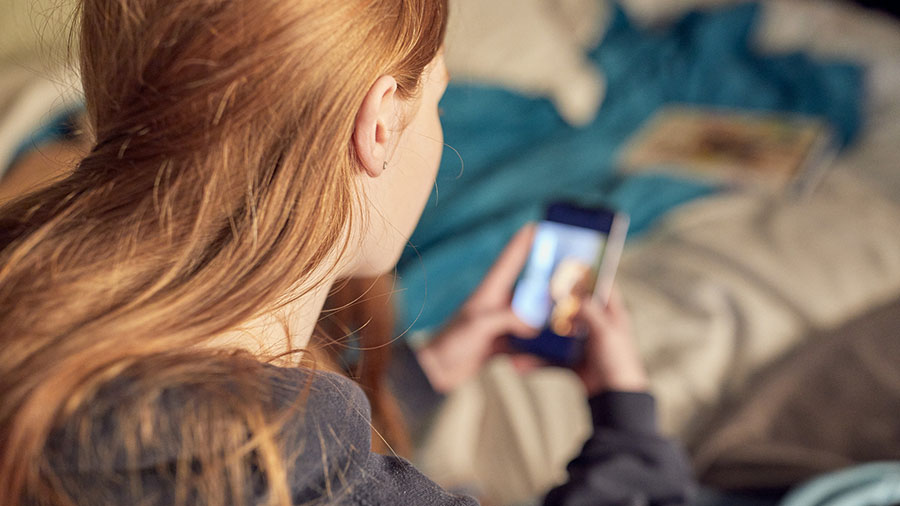
It’s important to have open conversations with your child about what they’re doing online from a young age, especially about the types of content they’re sharing.
Start by talking to them about image sharing in general and ask your child what sort of photos they’d feel comfortable posting online. This will give you a chance to see how much they already know about what is and isn’t appropriate to share. Remind them to never post or send anything that contains personal information and encourage them to come to you if they’re ever asked to share something that makes them feel uncomfortable.
If your child is older you might want to talk to them more directly about sharing nudes online. We know that this can be an awkward topic to bring up so we would recommend reading Childline’s advice on sharing nudes and sexting to give you some tips around how to approach it and what language to use.
Look out for opportunities in everyday life to start a discussion informally, such as a storyline on TV. This way you can have a conversation about sexting and sharing nudes without it being the main focus. Consider how you talk about this more widely, e.g. when discussing TV shows or news stories, and ensure that you aren’t using victim blaming language.
Phrases to avoid using:
- ‘they weren’t thinking’
- ‘it shouldn’t have been shared in the first place’
- ‘they are attention seeking’
This type of language could make your child not want to talk to you about what they are experiencing.
Need advice about online safety?
If you’re stuck, not sure what to do, or if you’re worried about your child, you can also contact our trained helpline counsellors on 0808 800 5000.
Childline also has lots of information about online and mobile safety that will help you and your child.
Supporting your child if they've been sharing nudes
If your child's been sending, sharing or receiving sexual messages, photos or videos, you may feel upset, angry or confused. Your children may also feel anxious talking about what's happened, but there are ways you can reassure them.
- Trying not to shout at them, or make them feel like it’s their fault. They’re probably worried and need your help and advice.
- Reassuring them and offering support – remind them they can always talk to you, another trusted adult, or Childline.
- Asking open questions such as "what happened?" rather than asking "why have you done it?", as the latter may stop them from opening up to you.
- Talking to them about how to treat others online and what is and isn’t appropriate online behaviour.
- Reminding them that people might not always be who they say they are online, so they should be careful about talking to anyone they don't know.
- Speaking with the designated safeguarding lead at their school, if your child agrees. Schools can keep an eye on the situation and help stop images or videos being shared. They can also support any other children who've been affected or have a counselling service children can self-refer to.
- Exploring the social media platforms, apps and games they’re using together.
What to do if a young person has an image shared
If a child or young person has a nude image or video shared of them online it can have a huge emotional impact on those involved.
There are steps you can take to get the image removed.
Young people under 18 who are worried that a sexual image or video of them may have been shared online can use Childline and IWF’s Report Remove tool.
If you're a parent or carer, we have lots more information about Report Remove.
This allows them to report an image or video shared online, to see if it is possible to get it removed. Once the report has been made, it keeps the young person informed at each stage and provides support and feedback where necessary. Young people just need to follow these steps:
- Follow the instructions to prove their age. They might need some ID (if they don't have any ID, they can get a young person's ID card).
- Log into or create a Childline account so they can receive updates on their report.
- Report and remove: the IWF will review it and work to have it.
- Contact CEOP if you’re worried that an adult has been communicating with a young person online or sharing nude images or videos.
- Use in-app reporting tools to try and get it taken down by the platform. If this doesn’t work you can contact Report Harmful Content who will contact the platform on your behalf.
We also have further information about online reporting.
